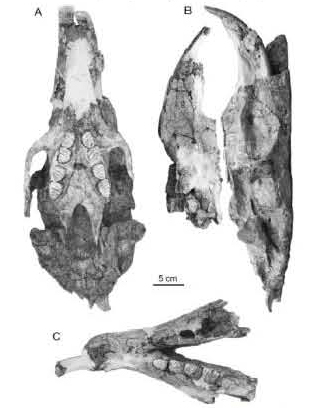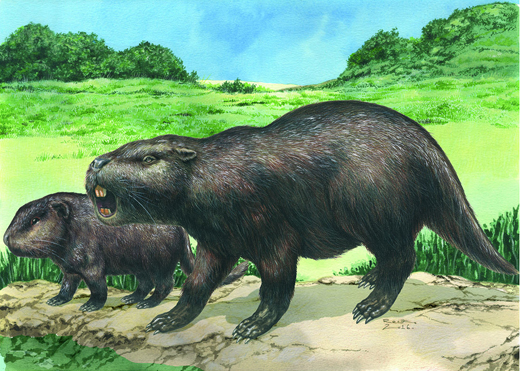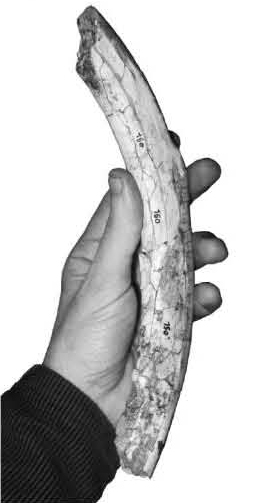Super-sized Rodent Re-Writes Family Tree
The skull and jaws from a pair of giant rodents, that represent an extinct species that could have weighed as much as half a tonne, are helping to re-shape the rodent family tree. Study of these new fossils have led researchers to propose a formal revision of the three known species of the genus Isostylomys into just one species, Isostylomys laurillardi.
Isostylomys laurillardi
These are the best-preserved fossils to date of this extinct group, which was previously known only from skull fragments and individual teeth, the scientists report in a new study, published in the “Journal of Systematic Palaeontology”,
The new fossils of the two rodents, an adult and a juvenile, paint a more complete picture of these extinct and massive rat-like animals. For example, the fossil discoveries raised questions about how these giant rodents were classified within their genus, and hint that several species that were thought to be related may instead be a single species. The fossils add to our knowledge regarding giant members of the Dinomyidae family and is helping palaeontologists to reappraise the phylogeny of this once diverse and speciose group of South American mammals.
The Giant Miocene Rodent Isostylomys laurillardi (Adult and Juvenile)
Picture credit: Renzo Vaira/Taylor & Francis
For models and replicas of prehistoric animals: Prehistoric Animal Models and Figures.
Isostylomys laurillardi Fossils from Southern Uruguay
The fossil material comes from the exposed cliffs in the Río de la Plata coastal region of southern Uruguay. The fossils have been dated to the Miocene Epoch (9.5 to 10 million-years-ago approximately). The researchers, including lead author, Dr Andres Rinderknecht of the Museo Nacional de Historia Natural (Uruguay), examined the teeth and skulls of fossil specimens, comparing them to the bones and teeth of the largest living rodent the Capybara (Hydrochoerus hydrochaeris).
The research team conclude that, due to similarities in the adult’s and the juvenile’s teeth structure, previously found fossils, which were smaller and thought to belong to a different species, were in fact from the same species.
Skull and Jaw Fossils of Isostylomys laurillardi

Skull in ventral view (A), skull and mandible in left lateral view (B), and mandible in occlusal view (C).
Picture credit: Taylor & Francis
The picture above shows the adult skull in ventral view seen from underneath, (A), and the skull and jaw viewed from the side (B). Picture (C) shows the jaw in occlusal view, the scale bar is five centimetres.
Revising the Taxonomy
The authors have consequently proposed that members of the subfamily Gyriabrinae could represent juveniles belonging to other subfamilies of Dinomyidae and that three known species of the genus Isostylomys should be merged into just one species, Isostylomys laurillardi.
Commenting on the team’s conclusions, Dr Rinderknecht stated:
“Our study shows how the world’s largest fossil rodents grow and we describe fossil remains of a giant rodent baby and an adult. Comparing them we conclude that from very young the giant rodents already were very similar to the adults which allows us to deduce that the great majority of the hypotheses before posed were wrong. The juvenile and the adult analysed here represent some of the largest rodents known to science with some of these animals weighing almost a ton.”
The Giant Incisor of the Adult Isostylomys
Picture credit: Taylor & Francis
The adult remains found consist of an almost complete skull with a partial jaw, while the juvenile’s remains are of a complete lower jaw and the right calcaneum (heel bone). Almost all previous discoveries of this kind have consisted of isolated teeth, and small fragments of skulls or jaws, which make this discovery some of the best-preserved remains of giant dinomids known to science.
“Making a Giant Rodent: Cranial Anatomy and Ontogenetic Development in the genus Isostylomys (Mammalia, Hystricognathi, Dinomyidae)”.
By Andrés Rinderknecht, Enrique Bostelmann and Martin Ubilla, published by Taylor and Francis.
The scientific paper: Access the scientific paper here.
Visit the award-winning Everything Dinosaur website: Everything Dinosaur.








Leave A Comment